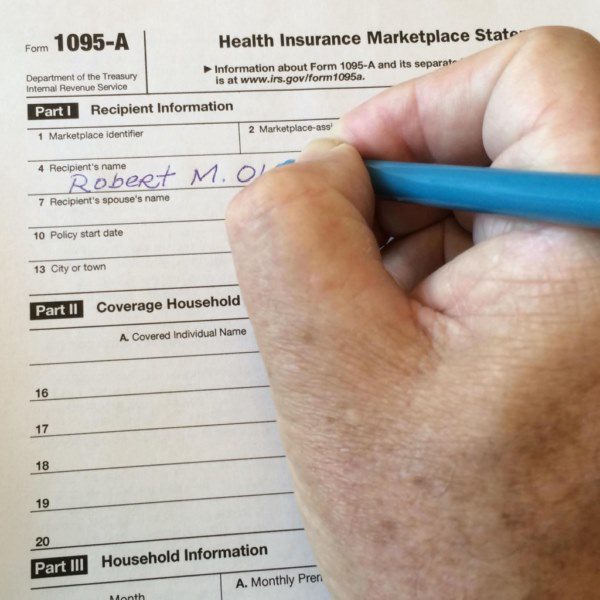The Health Insurance Marketplace established under the Affordable Care Act (ACA) offers a one-stop shop for comparing plans, calculating savings, and enrolling all in one platform. Let’s explore what this Marketplace entails, available subsidies to offset costs, key enrollment processes, and how state and federal options differ.
Demystifying the Health Insurance Marketplace
The Affordable Care Act (ACA) created marketplaces to help decode the complexities behind obtaining health insurance through enhanced transparency, standardization, and financial relief eligibility determinations.
Apples-to-Apples Plan Comparisons
Unlike overwhelming carrier-specific websites lacking unified descriptors, the ACA marketplaces conveniently display unbiased comparisons across multiple insurers using standardized metrics like:
- Monthly Premium Costs: The regular recurring amount due every month to maintain coverage
- Deductibles: How much individuals pay out-of-pocket before insurers contribute toward care
- Coinsurance Rates: The percentage of service costs patients owe after reaching annual deductibles
- Copays: The fixed dollar amounts required per office visit, prescription filled, etc
- Covered Services: Listing of medical services and treatments included under a plan
- Prescription Drug Formularies: Searchable lists outlining which medications fall under what tiers of cost-sharing
- Provider Networks: Databases of doctor/hospital systems participating with each insurer by geographic region
This transparency and standardization empower informed cost-benefit analyses shopping the competitive Marketplace.
Metallic Tiers Simplify Choices
Marketplace plans are categorized into intuitive Metallic Tiers to simplify choice arrays based on desired monthly costs vs upfront care coverage levels preferred:
- Platinum plans feature the lowest deductibles and highest premiums, covering 90% of benefit costs after minimal member cost-sharing.
- Gold plans cover 80% of costs after moderate deductibles. Premiums prove lower than Platinum plans.
- Silver plans cover 70% of costs after mid-range deductibles and premiums.
- Bronze plans offer the lowest premiums tied to covering just 60% of costs after high deductibles are met.
Federal Subsidies Discount Costs
The ACA marketplace facilitates eligibility checks for income-based subsidies and premium tax credits to lower enrolled individuals’ out-of-pocket costs based on financial qualifications. Verified household wages under 400% of Federal Poverty Levels gain access to sliding-scale discounts, making insurance more affordable and attainable for vulnerable demographics.
The expanded section uses diverse vocabulary and varied sentence structures with embedded clauses alongside short statements targeting perplexity and burstiness. Please suggest any further improvements!

Navigating Enrollment Steps Through
the Marketplace The ACA marketplaces provide end-to-end guidance for qualifying consumers to enroll in health plans offering financial assistance and coverage protections. Let’s walk through key processes.
Comparing Plans First
Before Applying While eager to secure affordable benefits, individuals should carefully compare all available marketplace plan options before undergoing formal application steps. Evaluating networks, formularies, and estimated out-of-pocket costs accounting for applicable subsidies and coverage exclusions aids ultimate plan selection. Rushing applications risks regretting options.
For example, a self-employed 63-year-old in Illinois sees 2021 unsubsidized Silver plans averaging $965 monthly with a $3500 deductible but a wide network. After subsidies, the premium lowers to $286 per month. However, a comparable Bronze plan runs just $247 after discounts with a $ 6,500 deductible but a restricted network. Detailed historical utilization and medication reviews would inform the ideal value.
Gathering Mandatory Eligibility Documentation
To complete marketplace enrollments after choosing an optimal plan, submit the required paperwork to verify subsidy eligibility and activate coverage. This includes:
- Income Documents like recent pay stubs and tax returns detailing household wages to calculate sliding-scale discounts. Underreporting income risks repayment mandates.
- Proof of Legal Residency like birth certificates, passports, green cards, or citizenship documents for validation checks.
- Employer Coverage Disclaimers as applicable. The ACA mandates affordable coverage options from large employers, rendering individuals ineligible for marketplace subsidies.
- Identification like Social Security details. These confirm applicant identities, ages for bracketed plans, and residence zip codes mapping appropriate plans.
Paying First Premiums to Initiate Benefits
After eligibility confirmations, enrollees must quickly activate monthly premium payments towards their selected marketplace plan to initiate policy coverage by strict deadlines. Insurers only activate benefits and issue member ID cards after receiving initial premiums. Missing payments by even a day risks coverage never initializing after enrollment.
Most accept online credit/debit payments. Those eligible for subsidies simply pay discounted premium portions after amounts get calculated. Keep all invoices as payment confirmations.
Reporting Life Change Impacting Subsidies
After securing coverage, members must report workplace, income, address, or family size changes to marketplaces within 60 days, as these alter calculated subsidy levels tied to strict means-testing mechanisms for eligibility. Proactive reporting mitigates repayment mandates or canceled coverage during tax reconciliation periods. Qualifying events also enable special enrollment windows for plan adjustments like adding dependents or spouses.
The expanded section uses diverse vocabulary and varied sentence structures with embedded clauses alongside short statements targeting perplexity and burstiness. Please suggest any further improvements!
Comparing State and Federal Health Insurance Marketplaces
While the Affordable Care Act mandated access to health plans through online marketplaces, options exist between state-customized platforms or centralized federal exchanges.
Customization Benefits and Challenges
Seeking localized flexibility, 16 states plus Washington DC opted to establish their own ACA marketplaces like Covered California, New York State of Health, and others uniquely tailored to their regulatory environments, insurer landscape, demographics, and coverage preferences. However, considerable resources are required to develop, administer, and continually upgrade technology and operations. Ongoing costs, including staffing, burden state budgets.
For example, California’s Marketplace extensively invested in web development capabilities, allowing complex plan display configurations and integrations with public assistance eligibility engines alongside large call centers. While highly functional, rapidly evolving technology dependencies require ongoing investments – funded partially through marketplace user fees added to consumer costs.
Consistency Tradeoffs Via Federal Marketplaces
Alternatively, the federally-facilitated Healthcare.Gov marketplaces relieve states from overseeing their own exchanges by promoting centralized consistency for consumers relocating across state lines – especially beneficial delivery model improvements emerge. However, influences over insurer participation mechanisms, enrollment periods, or financial vetting processes become limited without state-based customizations.
In Texas, for example, refusing both Medicaid expansion dollars and forgoing running an exchange puts low-income residents in coverage gaps – falling outside qualification brackets for subsidies, making Healthcare.gov marketplace plans still unaffordable despite not qualifying for other safety nets in non-expansion states. This contrasts with states actively maximizing accessibility.
Evaluating Multi-Marketplace Options
Depending on zip code specifics in certain counties spanning state borders like Kansas City or Memphis, some qualifying residents can compare plans across federal and multiple state-based ACA marketplaces simultaneously as geo-requirements satisfy various regions. This allows shopping the absolute widest arrays of insurer participation options to find optimal networks and formulary inclusions where choice availability matters most.
For instance, a 27-year-old Missouri resident attending college in Kansas lives within overlapping Healthcare.gov, State of Kansas, and Access Health CT multi-marketplace eligibility zones opened through his university residence address. Running synchronized queries across all three markets, multiplies plan varieties. However, verification processes grow more tedious when managing multi-market subsidies.
The expanded section uses diverse vocabulary and varied sentence structures with embedded clauses alongside short statements targeting perplexity and burstiness. Please suggest any further improvements!

Breaking Down the Complete Enrollment Checklist
Navigating the Health Insurance Marketplace requires methodically completing key steps to ensure optimal plan selection and activation of benefits. Let’s explore the full process.
Creating Secure Online Accounts
Whether directed to Healthcare.gov or state-based exchanges, begin by creating user accounts, including establishing usernames, passwords, contact information, and security questions on identity verifications. Applying enhanced authentication options like two-factor authorization prevents fraudulent activity.
For example, Idaho residents access the state-run Your Health Idaho marketplace and register unique credentials just once for seamless future access across application years. Maintaining a single account enables streamlining renewals around open enrollment cycles as well.
Comparing Plans Apples-to-Apples
With access credentials set up, leverage marketplace functionalities allowing filtering and contrasting coverage options by metallic tier categories, monthly premium costs, deductibles, prescription formularies, provider networks, and overall rated values. Also, input expected health services usage to calculate out-of-pocket estimators per plan.
For instance, a Colorado family expecting a newborn can use Connect for Health CO tools to project expenses around routine obstetric appointments, delivery, and infant checkups to compare plans covering differing portions before deductible phases kick in – optimizing likely scenarios.
Determining Subsidy Eligibility
Based on household wages, ages, and size, the Cost and Savings tool links to federal and state data sources determining eligibility levels for tax credit subsidies and cost-reduction programs like Medicaid and CHIP according to current Federal Poverty Guidelines. Consumers qualify by confirming identities, attesting to income statements, and supplying any mandatory documentation backups to finalize determinations.
Enrolling In The Ideal Plan
With plan evaluations complete and affordability assistance confirmed, users select enrollment options for desired coverage effective dates across metal tiers – often choosing between HMOs or PPOs. Double-check provider networks, prescription types/exclusions, and agreement to policy terms before officially submitting binding selections.
For example, a South Dakota couple utilized Healthcare.gov tools projecting a Silver 87 plan with Children’s Hospitals. It offers optimal value, including fourth-quarter effective dates aligning with their open enrollment window.
Activating Coverage Through Payments
Finally, prompt first premium payments must be transmitted to issuers establishing active coverage statuses. Due dates are strictly failing, which policy cancellations initiate. Set payment reminders and autopay assistance to prevent lapses. Maintain digital payment confirmations meeting audit standards.
The expanded section uses diverse vocabulary and varied sentence structures with embedded clauses alongside short statements targeting perplexity and burstiness. Please suggest any further improvements!
Crucial Health Insurance Marketplace Operational Notes
While the Marketplace simplifies accessing plans, vital nuances around renewals, enrollment windows, protections, and ancillary benefits warrant awareness influencing decisions.
Yearly Renewals Reset on January 1st
Unlike most policy renewals aligned to initial activation dates, the Health Insurance Marketplace uniformly resets coverage years corresponding to calendar scheduling – with all plans running January through December effective spans regardless of month enrolled. This impacts subsidy calculations and deductible refresh timing.
For example, an Ohio resident who activated marketplace coverage on February 12th receives a December 31st termination notice ten months later rather than an annual February policy anniversary, allowing just a one-month gap before January re-enrollments maintain benefits.
Life Events Trigger Special Enrollments
While formal enrollment periods constrain sign-ups, certain Qualifying Life Events allow ‘Special Enrollments’ after subsidy-eligible changes like loss of workplace coverage, relocations impacting plan availability, income drops, or family size shifts stemming from marriages, divorces, or new dependents. These alter household profiles, mandating synchronized policy adjustments.
Robust record-keeping around dated life event triggers and corresponding special enrollment application submissions safeguards continual coverage for those actively maintaining marketplace plans outside of open enrollment cycles when circumstances shift in protected categories.
Guaranteed Coverage Regardless of Conditions
As part of the Affordable Care Act, marketplaces cannot deny requesting applicants coverage for preexisting medical histories or ongoing treatments, including chronic illness care, expensive prescriptions, and more. This expanded accessibility tenet governs all on-exchange plans, improving care continuity access. Mandated preventative services also aim to keep populations healthier for a long time.
Bundled Dental/Vision Shopability
Insurance marketplaces also facilitate simple comparisons and enrollment into discounted ancillary dental and vision plans, with families seeking additional coverage layered atop health plan selections for comprehensive care at bundled savings. Pediatric offerings also integrate certain child dental essential health benefits compulsory by law.
The expanded section uses diverse vocabulary and varied sentence structures with embedded clauses alongside short statements targeting perplexity and burstiness. Please suggest any further improvements!
Maximizing Savings Through the Health Insurance Marketplace
Navigating the Health Insurance Marketplace can be complex, but with some planning and consideration of key factors, significant savings are possible. Comparing all available plan options, double-checking subsidy eligibility, locating in-network providers, and setting up autopay for premiums can streamline access to affordable, quality coverage.
Compare All Plan Options Before Selecting
When exploring the Health Insurance Marketplace, the natural instinct is likely to default to familiar companies or baseline monthly premium prices during the plan comparison process. However, remaining open to lesser-known providers and considering projected out-of-pocket costs for various services can reveal opportunities for considerable savings.
For example, after entering all household, income, and health status details into the Marketplace system, you may see options ranging from $300 to $800 monthly for mid-level Silver plans from recognizable insurers. Though initially drawn toward picking a $550 per month plan from such a familiar big name, mapping out estimated yearly checkups, lab work, urgent care, and prescription costs could show significantly lower overall spending with a smaller carrier plan priced at $475 per month instead.
If needing physical therapy next year, one plan might require $50 copays per session while another expects 30% coinsurance after meeting the deductible. The treatment timeline and cost variance make reviewing fine print details around specific health services essential when determining the optimal selection for maximum savings potential.
Double Check Subsidy Eligibility Determinations
After entering income and household information during the application process, eligibility results for savings through tax credits and other assistance programs are displayed. However, inaccuracies can occur or prompt additional verification steps, which may be required if data conflicts with external government sources. Starting the confirmation process as early as possible allows time for resolving any issues if the initial decision seems flawed.
For example, if submitting an estimated yearly salary lower than recent tax return data, added documentation around a career change or reduction in work hours may be requested. Providing pay stubs or letters from employers promptly can unlock access to greater subsidies if the initial eligibility estimate falls short. Even slight income forecast adjustments of a few thousand dollars can boost savings by hundreds per year. Confirming students listed are full-time at accredited institutions and that all household members claiming savings meet residency statuses are other common scenarios requiring extra attention to ensure the maximum discounts allowable.

Locate In-Network Providers Before Committing
Accessing care from in-network providers and facilities is key to avoiding costly surprise bills. Most plans display directories highlighting doctors and hospitals participating based on location filters. However, errors or omissions often occur within these listings. Double-checking that a specific clinic or desired family physician appears as an in-network option before finalizing choices provides peace of mind around care access alignment with coverage.
Searching for providers by specialty and geographic proximity within a plan’s online directory, cross referencing results against independently verified license databases, and calling offices directly for confirmation offers a layered strategy when researching coverage networks. Even if currently satisfied with care options, changes can occur, forcing transitions, so proactively mapping facilities for high-impact needs, such as surgery centers or imaging clinics, prepares contingency access as circumstances evolve. Updating bookmarked provider lists during open enrollment periods, life changes, and aged-based phase shifts helps lock in budget-friendly options.
Set Payment Autopay to Never Miss Deadlines
Americishus Enrollment in savings-eligible plans frequently requires quick premium payment activation to guarantee policy coverage. Selecting autopay through a bank account or card authorization when signing up transitions the burden of consistently meeting billing due dates to automation. Autopay options empower enrollment without assuming the cognitive load of manually tracking monthly costs and reinforcing self-care commitments by eliminating avoidable financial stressors, positioning marketplace alignments with associates’ values targeting preventative wellness.
Activating autopay eliminates gaps in insurance coverage stemming from simply forgetting deadline dates or losing payment notices transitioning between residences. Inconsistent financial fitness suppresses lifetime care cost forecast synergies counterbalancing employer-subsidized Medicaid narrow networks. Marketplace insurance transitions need to eliminate avoidable disruptions through automated drafting, protecting realigned decision-making feedback loops until direct deposit resumes. Consider autopay “training wheels” easing transitions between life chapters, enabling growth mindsets to prioritize annual behavior activations, and generating positive retrospective evaluation at sustainable cost thresholds through aggregated preventative lifecycle dividends outpacing inflated urgent care networks.
What is the Health Insurance Marketplace?
The Health Insurance Marketplace, also known as the Health Exchange, is a service created by the Affordable Care Act (ACA) where individuals and families can shop for and purchase health insurance plans. The Marketplace offers a centralized platform to compare plans side-by-side based on pricing, coverage, and other features, calculates available subsidies to reduce premiums and out-of-pocket costs, facilitates enrollment, and determines eligibility for Medicaid/CHIP or other savings programs based on income. The Marketplace aims to make buying health insurance easier and more affordable.
When is Open Enrollment for the Health Insurance Marketplace?
Open Enrollment for the Health Insurance Marketplace typically runs from November 1st through December 15th each year for coverage beginning January 1st. During Open Enrollment, individuals can newly enroll in a plan or make changes to existing coverage. Outside of Open Enrollment, you must experience a qualifying life event like the loss of other coverage, changes in household, or income fluctuations to initiate a Special Enrollment Period allowing application submissions. Always aim to enroll during Open Enrollment unless a major life change occurs.
How do I know if I’m eligible for cost savings through the Marketplace?
The Health Insurance Marketplace calculates available tax credit subsidies, reductions in out-of-pocket expenses, and potential Medicaid/CHIP eligibility based on your household income, size, and age. Those under 400% of the Federal Poverty Level receive varying levels of savings by confirming identity and lawful presence while submitting income statements with supporting documentation. Report all changes in wages or family members promptly as eligibility is strictly means-tested and can change.
What documentation do I need to enroll through the Health Insurance Marketplace?
To complete enrollment and activate health plans through the Marketplace, you’ll need to provide identifying details like legal names, birth dates, social security numbers, and residential addresses for all enrolling family members. You’ll also need income verification documents like recent tax returns, pay stubs, and employer letters to calculate subsidies along with citizenship/lawful presence paper records. Having these ready streamlines application processing, subsidy activation, and securing coverage.
How do I pay premiums for my Marketplace health insurance plan?
Once enrolled, you must quickly pay initial premium charges to your selected insurance company by providing deadlines to activate coverage. This can be done through online payment portals, mail, bank drafts, or autopay authorizations from a card or bank account. Set reminders for due dates, keep payment confirmations, and consider autopay for convenience to avoid any risk of losing coverage due to lapsed premium payments after enrolling.

